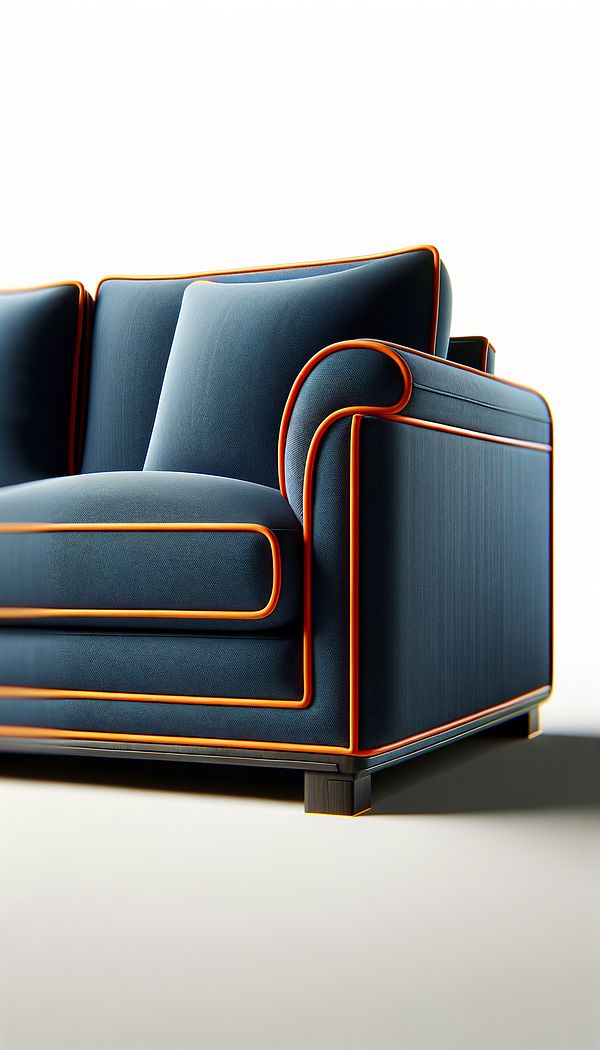What is Contrasting Welt?
Contrasting welt is a decorative edge detail used in upholstery and soft furnishings.
Description
Contrasting welt is an upholstery technique that involves using a cord encased in fabric, which is then sewn along the seams or edges of upholstered furniture to define its outline. The term 'welt' refers to the cord itself, typically made from cotton, which is covered in a strip of fabric. When this welt fabric contrasts in color or texture with the main upholstery fabric, it is referred to as a contrasting welt. This decorative detail not only adds a pop of color and visual interest but also enhances the structural integrity of the piece by reinforcing the seams.
Contrasting welt can be applied to a variety of upholstered items, including sofas, chairs, cushions, and even window treatments such as valances. It is a versatile decoration that bridges the gap between function and fashion. By selecting a welt in a contrasting color or pattern, designers can draw attention to the shape of the piece or add a playful element to the overall design scheme. Additionally, contrasting welt offers an opportunity for customization, allowing individuals to personalize their furniture and make a unique statement in their interior design.
Usage
A common application of contrasting welt is on a traditional sofa where a bright, contrasting color is used for the welt against a neutral fabric. This highlights the sofa's intricate curves and adds a unique, customized look. Alternatively, in a contemporary setting, a metallic leather welt on a velvet upholstered chair can add a touch of luxury and modernity.
FAQs
-
Can contrasting welt be added to existing furniture?
Yes, contrasting welt can be added to existing furniture. It involves reupholstering the item with the chosen welt to achieve a new look.
-
Is contrasting welt only used on furniture?
No, contrasting welt is not limited to furniture. It can also be used on soft furnishings such as cushions and window treatments, like curtains and valances.
-
How do you choose the right contrasting welt for a piece of furniture?
Choosing the right contrasting welt involves considering the overall color scheme and design style of the room. Opt for a color or texture that complements the main upholstery while also making a statement or adding depth to the design.
Practical Application
Selecting a contrasting welt for your furniture or soft furnishings can be a creative way to inject personality into your space. Consider the material and color of the main upholstery and decide whether you want the welt to blend subtly or stand out boldly. When selecting a contrasting welt, also think about the longevity of the design—choose something that you will enjoy for years to come. Additionally, ensure that the chosen welt material is durable and suitable for the intended use of the furniture or furnishing.
-
Furniture Types599 articles
-
Decorative Techniques322 articles
-
Materials & Textiles360 articles
-
Color & Patterns154 articles
-
Textiles & Upholstery252 articles
-
Balloon ShadeA balloon shade is a type of window covering known for its puffy, voluminous appearance when raised.
-
DovetailDovetail is a type of interlocking joinery technique used in woodworking.
-
VarietyVariety in interior design refers to the quality of being different or diverse.
-
Fleur De LisA stylized lily or iris, used as a decorative design or symbol.
-
Tri-fold MirrorA Tri-fold Mirror consists of three panels of mirrors, with the central panel being larger and flanked by two smaller, adjustable side panels.
